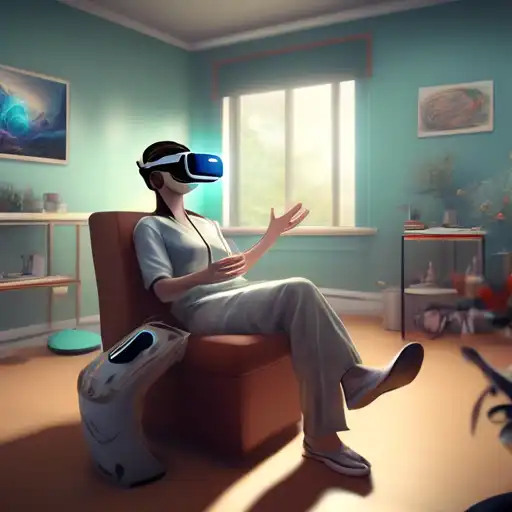The Transformative Role of Virtual Reality in Modern Therapy Practices
Virtual Reality (VR) technology has transcended its initial entertainment-centric applications to become a groundbreaking tool in the field of therapy. By creating immersive, controlled environments, VR is revolutionizing the way therapists treat a variety of mental health conditions, offering patients new avenues for healing and recovery.
Understanding VR Therapy
VR therapy involves the use of virtual reality technology to simulate environments or situations for therapeutic purposes. This innovative approach allows individuals to face their fears, practice social skills, or relive traumatic memories in a safe and controlled setting, under the guidance of a professional.
Applications of VR in Therapy
The applications of VR in therapy are vast and varied, addressing a wide range of psychological conditions:
- Anxiety Disorders: VR exposure therapy is particularly effective for treating phobias, such as fear of flying, heights, or public speaking, by gradually exposing patients to their fears in a virtual setting.
- Post-Traumatic Stress Disorder (PTSD): Veterans and others suffering from PTSD can benefit from VR therapy by safely revisiting traumatic events to process and overcome their trauma.
- Autism Spectrum Disorder (ASD): VR provides a unique platform for individuals with ASD to practice social interactions and recognize emotional cues in a controlled environment.
- Pain Management: VR has been shown to reduce pain perception in patients undergoing painful medical procedures by distracting them with immersive experiences.
The Benefits of VR Therapy
VR therapy offers several advantages over traditional therapy methods:
- Controlled Environment: Therapists can tailor virtual environments to meet the specific needs of each patient, adjusting scenarios in real-time based on the patient's responses.
- Safe Exposure: Patients can confront their fears or traumas without the risks associated with real-life exposure.
- Engagement and Motivation: The immersive nature of VR can increase patient engagement and motivation, making therapy sessions more effective.
Challenges and Considerations
Despite its potential, VR therapy is not without its challenges. The cost of VR equipment and the need for specialized training for therapists can be barriers to widespread adoption. Additionally, more research is needed to fully understand the long-term effects of VR therapy and to establish standardized protocols for its use.
The Future of VR in Therapy
As VR technology continues to evolve, its applications in therapy are expected to expand, offering even more innovative solutions for mental health treatment. With ongoing research and development, VR therapy has the potential to become a staple in therapeutic practices, making mental health care more accessible and effective for people around the world.
For those interested in exploring the intersection of technology and mental health further, consider reading about the impact of technology on mental health or innovative approaches to mental health treatment.
